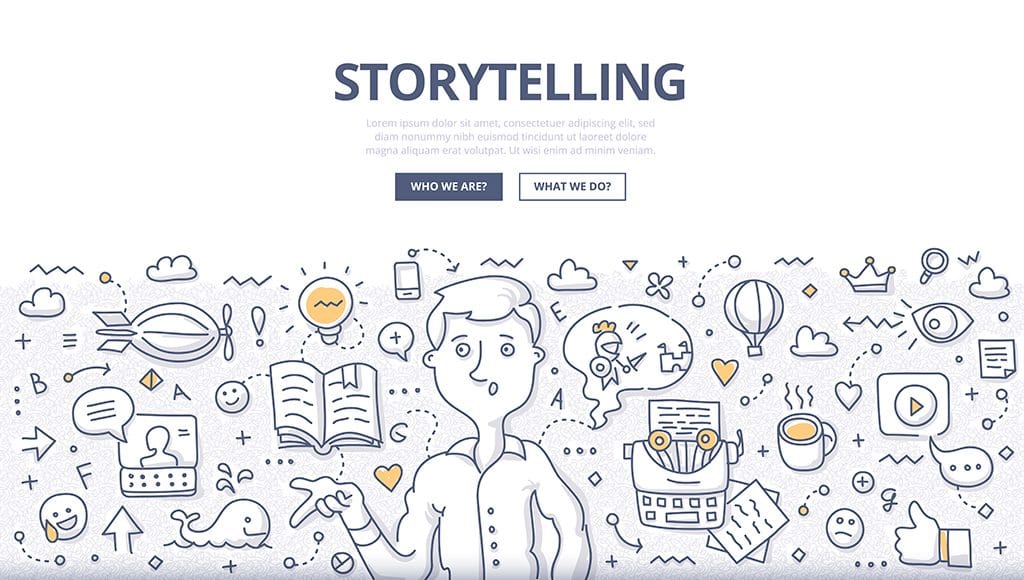What do you think of when the name Amazon comes to mind?
Probably such things as “can find anything,” “reliable,” “keeps in touch.” And these thoughts are not by accident. They come to you because Amazon has spent a great deal of time fostering that image.
It is one of the strongest brands in existence today, and everything it does and says relates to that brand image. Now we have “Amazon prime;” we have emails requesting feedback on our experiences with them; we get suggestions based upon our purchasing or browsing history. We feel pretty good about Amazon. We certainly trust this enterprise with our personal and financial information. And when we are looking for products, we often go to Amazon before any other source.
It’s important to point out, too, that well over half of the consuming public like buying from brands that are familiar and/or that have been recommended by others they trust.
What is a Brand?
In a very simple statement: Your brand is what consumers think of when your name comes to mind. What do you think that will be? What do you want that to be?
Every business, of any size, would love to have the strong brand recognition and trust that Amazon has. And it is possible. As you consider how you are developing and maintaining your brand image, take a look at these seven characteristics that all strong brands have. And as you consider these characteristics, think about how you are fostering them in everything you do. The stakes are high.
1. Strong Brands Focus on Their Target Audience
It’s not that a target audience may not expand. But you have to start somewhere. Amazon started selling to book lovers and look where it is today.
Right now, you must focus on the target audience you have right now. And everything you publish online must take into account that demographic. Consider the difference in messaging from Rolex and Lego. The differences are stark, both in vocabulary, in images, and on social media.
It’s important to dig deep into your audience – what do they want to hear and how do they want to hear it?
This is what founders Michael Dubin and Mark Levine obviously did when they launched Dollar Shave Club with the offer of a subscription-based razor blade service. They targeted a millennial and Gen X male audience and crafted their messages based on that demographic. It began with an explainer video, with language and “theatrics” that would obviously appeal to this target.

Dollar Shave Club CEO Michael Dubin
And it worked. The video went viral and the company grew exponentially after that. Yes, its demographic has expanded, most notably to women, and new products are continually introduced. The brand image and message, however, have remained the same throughout. It has become trusted and, actually enjoyed, because of its content on its website and on social media. The brand is “fun,” but also reliable.
2. Strong Brands Have a Defined Mission Statement
Can you state your brand mission in 30 seconds or less? If not, you need to go back to the drawing board and craft one. That mission should direct everything you say and everything you do.
Nike has a brand mission, and it is clearly communicated in everything it does.

Nike’s brand is defined through their mission statement
In Nike’s message, everyone is an athlete, at least in the making. That expands the audience. Even the famous motto, “Just Do It” speaks to this.
What’s your passion? Why do you exist? What is the value that you want to portray to your audience? What do you want to be remembered for? Until you have this mission solidified in your mind, you cannot create content that will support it.
3. Strong Brands Know Their Competition
Finding out what your competitors do well to spread their brands and gain recognition is just smart. It’s not that you want to copy them, but you do need to know what works and what does not. What are their messages and are they resounding with their audiences (remember, these are your audiences too).
The goal here is to do it better. So, look at the following:
- How does the competitor market his products or services?
- What value is the competitor offering to his audience?
- What types of engagement with audiences occur on social media?
- Are there reviews of the company and, if so, what are their customers saying?
Differentiating yourself in positive ways from your competitors, with messages that will resonate, can get your brand in front of their audiences too.
4. Strong Brands Identify Their Value and Benefits
A big part of branding is convincing audiences that what you offer is of high value. Of course, this means you have top quality products or services, but what makes you unique?
Toms Shoes sells, as you can probably guess, shoes. There is nothing unique about an online shoe retailer. But founder Blake Mycoskie had a “better idea.” His mission? To do good while making a profit. His idea of doing good was “one-for-one” giving. For every pair of shoes a customer purchased, he would donate one pair to a needy child.
His brand became known for this, and its popularity increased exponentially. Today, well over 60 million shoes have been donated, and the company has branched out into eyecare and clean water. No one thinks of Toms Shoes without thinking of its global projects. And other brands have adopted his business model too.

Tom’s founder Blake Mycoskie giving shoes to children in need
You may not be able to offer free product, but what can you identify what will make your business unique in the eyes of your audience.
WD-40 launched a campaign that involves its audience – the many uses of this valuable product. From all over, consumers have submitted their uses for WD-40, which now numbers well over 200. Through this simple reaching out, WD-40 spread its brand (and its revenue).
5. Strong Brands Know That Visuals and Mottos are Important
“When you care enough to send the very best” has been that tagline for Hallmark Cards forever. People identify the motto with the brand. And to reinforce that motto, look at Hallmark’s logo:

Hallmark brand logo
It’s regal, just like the quality of its cards.
This is an area where you may need some creative writing and some design help.
The Logo
Your logo will be everywhere – on your web pages, on your business cards, on your packaging, etc. It must portray you and your message. The best bet? Hire a graphic designer or design agency with lots of experience in logo designs – artists who will take the time to understand your brand and its mission.
The Tagline/Motto
Likewise, your motto must also portray your mission. Get some help from a creative writer who has a knack for wit but who also will take the time to understand your business and what you want your brand to portray.
6. A Strong Brand has a Consistent Voice
Depending on your target audience and your niche, your “voice,” or the language and style you use (the visuals too) must make sense. The voice of a brand like Red Bull will certainly not be similar to the “voice” of Rolls Royce.
If you understand your audience, you will choose the right voice – professional, informal, sophisticated, simple, conservative, a bit sketchy, etc. And when you have the right voice, you will connect with your audience.
And the voice should be consistent throughout – on your site, your blog, your social media platforms, emails, and even your ads. Your voice adds a personality to your brand, and consumers want to see your personality.

Aflac Heisman advertisement
A great example of consistency of voice is Aflac Insurance. It has the now famous Aflac duck, with humorous messages and stories. That playful voice has become the personality of the insurance company, and it has managed to take a serious business niche and make it fun.
7. A Strong Brand Tells Its Stories

Your audience comes to know who you are, what you offer, and why it should care through the stories you tell. What’s your personal story as the founder of your company? What stories can you tell that feature your customers? Or your team? What about events and activities that show social responsibility or community contributions? Every story you tell fosters your brand message and helps to make connections and foster relationships.
Wrapping It Up
The most important thing you can do for your business is to build a brand message and foster it in everything you do.
Your goal is to become consistent with your mission, your voice, your logo and motto, and all content or ad materials you publish. And all of these are based upon the demographics of your audience. When you honor that audience throughout your brand building and maintenance, you will reap loyal customers who trust and appreciate you.
No comments:
Post a Comment